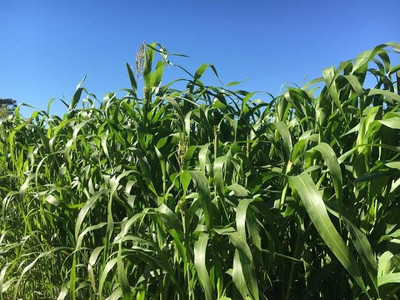BSARKAR Hybrid sudan grass seed Seed(100 per packet)
Quick Overview
Product Price Comparison
Certainly! Here's a description of Sudan grass:1. **Appearance**: Sudan grass (Sorghum sudanense) is an annual warm-season grass that typically grows 3 to 8 feet tall, depending on the variety and growing conditions. It has slender, upright stems that can vary in color from green to reddish-purple.2. **Leaves**: The leaves of Sudan grass are long, narrow, and typically range from 4 to 24 inches in length. They are arranged alternately along the stems and have a coarse texture.3. **Flowers and Seeds**: Sudan grass produces panicles of small flowers at the top of its stems during its growing season. These flowers give way to small seeds, which are usually about 3 mm long and can vary in color from light brown to black.4. **Culinary and Agricultural Uses**: Sudan grass is primarily grown as a forage crop for livestock feed. It is highly valued for its rapid growth and ability to produce high yields in warm climates. Sudan grass is often used for grazing, hay production, silage, and as a cover crop.5. **Adaptability**: Sudan grass is well-suited to arid and semi-arid climates with hot summers. It is drought-tolerant and can thrive in soils with low fertility, making it a valuable option for farmers in regions where other crops may struggle.6. **Nutritional Content**: As a forage crop, Sudan grass is nutritious for livestock. It provides a good source of carbohydrates, proteins, and vitamins essential for animal health and growth.7. **Ecological Benefits**: Sudan grass can also be used as a cover crop to improve soil health. Its deep root system helps prevent erosion and improves soil structure by adding organic matter when incorporated into the soil after growth.8. **Potential Drawbacks**: While Sudan grass is beneficial for livestock feed and soil improvement, it can also be toxic to animals if grazed improperly. It contains compounds called cyanogenic glycosides, which can release cyanide under certain conditions. Proper management and monitoring are necessary to prevent toxicity in grazing animals.In summary, Sudan grass is a versatile and valuable grass species primarily used as a forage crop for livestock. It thrives in warm climates, provides nutritious feed, and offers ecological benefits as a cover crop for soil improvement. However, caution must be taken with its management to avoid potential toxicity issues in grazing animals.


